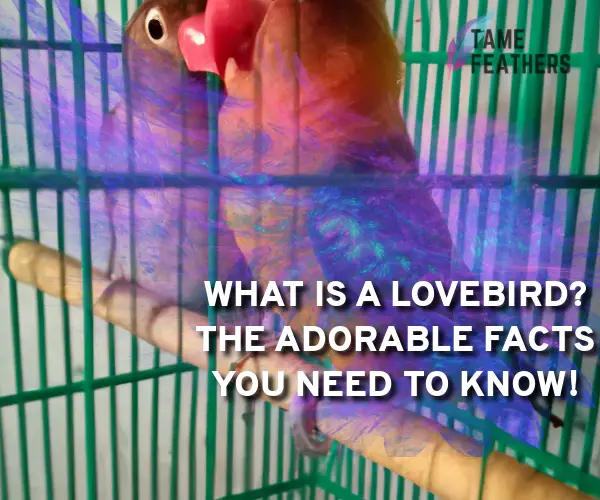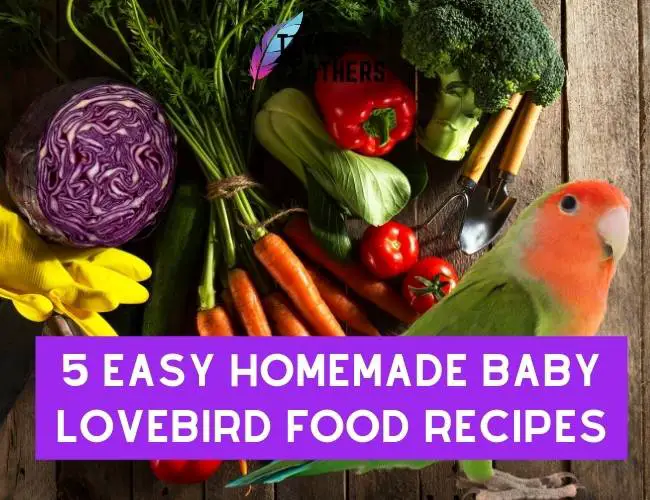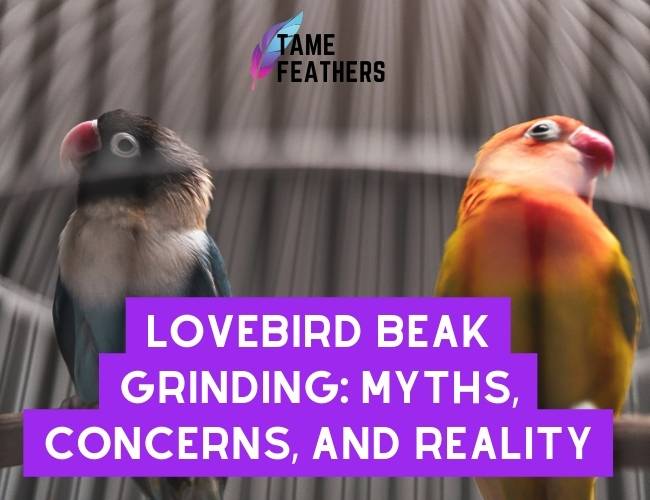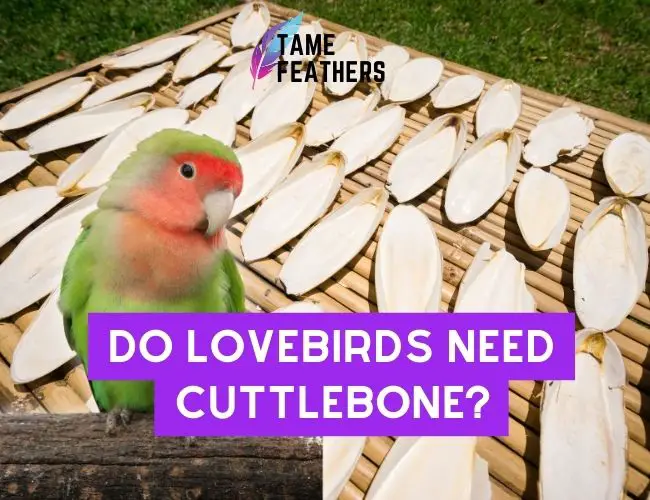Table Of Contents
Origins
Lovebirds are a species of parrot that are indigenous to select islands in Madagascar and Africa.They are one of the smallest members of the parrot family.
Their name comes from the close tie that they share with one another, and it is not unusual for them to establish monogamous pairs that raise their young together in the same nest.
Lovebirds may be small, but they have enormous personalities despite their size! They are well recognized for being extremely lively birds that take pleasure in engaging in conversation with both humans and other animals.
It is reported that if given the opportunity, these lovable little birds will even try to climb onto your head or shoulders and perch there.
Physical Characteristics
Lovebirds can be found in a wide variety of colors, sizes, and patterns, some of which include blue, green, yellow, orange, and white.In addition, several types have distinctive markings on their heads, such as mohawks or red eyes.
Depending on the species, the length of a lovebird ranges anywhere from 10 to 15 centimeters, or 4-6 inches.
These amazing little creatures are frequently confused for budgies due to their similar appearance; however, there are clear differences between the two types of birds.
Budgies have larger bodies than lovebirds, which gives them an overall bigger look in comparison to their smaller cousins.
Lovebirds, on the other hand, have smaller bodies than their larger cousins.
Beak & Feet
The most distinguishing aspect of a lovebird’s body is its broad, curved beak; this attribute allows them to securely hold onto objects, allowing them to more easily climb around and navigate their environment.Lovebirds’ feet are equipped with specialized claws that improve the animal’s ability to cling to surfaces while hopping or flying.
Due to the fact that their wing span can reach up to 10 inches (25 cm), they are nimble fliers who are able to maneuver fast in small places.
This makes them ideal for maneuvering around branches or trees in woods.
In addition to this, while they are in the air, they give the impression of being teeny, colorful helicopters that are flapping their wings.
Diet & Eating Habits
In general, lovebirds consume seeds, fruits, vegetables, nuts, insects, and various other kinds of tiny invertebrates for food.It has been observed that they will occasionally eat flowers as well.
Every day, give your pet a varied selection of fresh food products to ensure its continued good health.
You want to augment this food with pellets that are specially prepared for parrots and designed exclusively for them.
It is essential that you do not overfeed your pet or provide it with an excessive amount of sugary foods like candy.
Doing so may result in obesity and a variety of health issues in the future.
Personality Traits
As was stated earlier, lovebirds are incredibly social creatures who thrive on the attention of both humans and other animals.These lovely birds are capable, with the right kind of care and instruction, of learning to say a few basic words and phrases.
They are also naturally pretty inquisitive, therefore it is important to make sure that your feathered buddy has plenty of interesting things to play with so that it does not become bored.
Despite having high amounts of energy during daylight hours when playing outside, love birds spend the night time cuddling up together inside their nests, which are typically found near tree trunks where temperatures remain steady throughout the year.
During the chilly winter nights, this activity helps keep them warm while also providing their parents with protection from any nearby possible predators.
Lifespan & Breeding
Love birds have a life expectancy of up to 8 years, but with the right kind of care, some specimens have been known to live even longer, reaching ages of 12 or even older.When the mating season arrives, the males engage in wooing by singing songs and showing their colorful feathers in the hopes of attracting a female mate into a nest box that has been provided by the owners indoors and away from drafts, windowsills, and other potential hazards.
Incubation process plays key role in determining success rate and productivity overall family dynamic itself remains intact, happy, and healthy state broad public eye visible society as a whole.
.
Once pair successfully mates eggs placed within days afterwards take anywhere from three to four weeks to hatch chicks slowly fledge ready for complete maturity adulthood months later depending number of young hatched same time period span involved incubation process plays major role in determining success rate and productivity overall family





